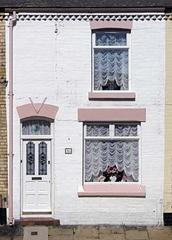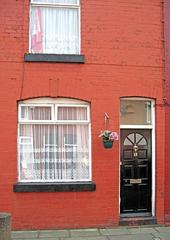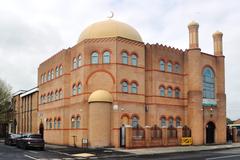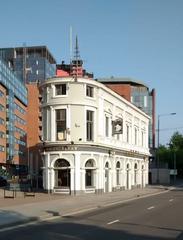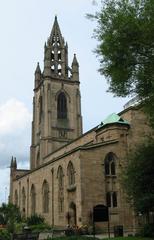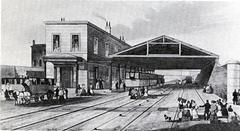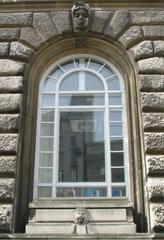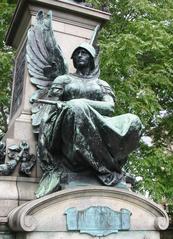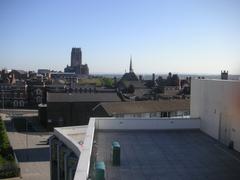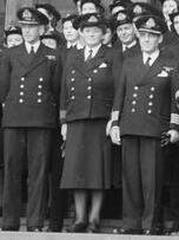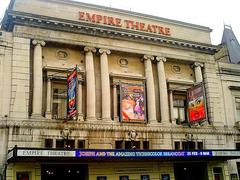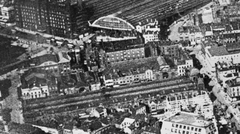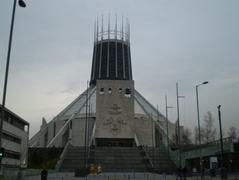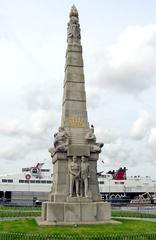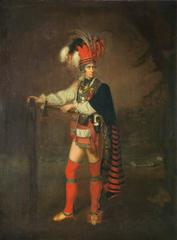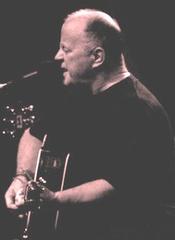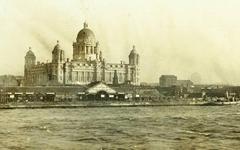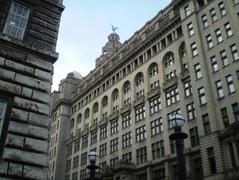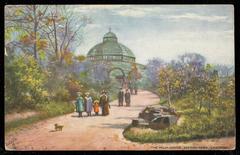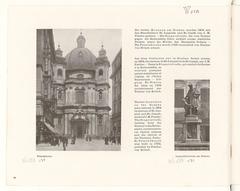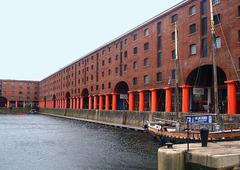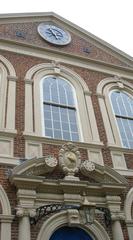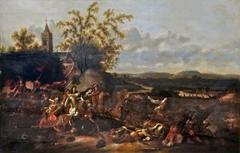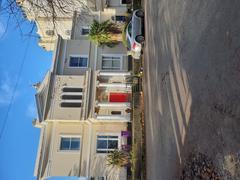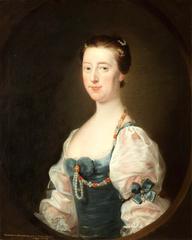
German Church Liverpool: Visiting Hours, Tickets, and Historical Sites Guide
Date: 04/07/2025
Introduction
The German Church in Liverpool, a cornerstone of the city’s Georgian Quarter, stands as a living testament to Liverpool’s rich multicultural heritage and the resilience of its German immigrant community. Established in the late 18th century, the church has evolved from its origins as Newington Chapel to its present role as both a spiritual sanctuary and a vibrant cultural hub. Through centuries of transformation, conflict, and adaptation, it has preserved German language, tradition, and social networks for generations.
This detailed guide explores the German Church Liverpool’s fascinating history, architectural evolution, and its pivotal place within the city’s German-speaking community. You’ll also find comprehensive visitor information, including opening hours, ticketing, accessibility, and nearby attractions, to help you make the most of your visit to one of Liverpool’s most distinctive historical sites (hslc.org.uk; deutschekirche.org.uk; velvethummingbee.com).
Table of Contents
- Introduction
- Historical Background
- Visiting the German Church Liverpool
- Nearby Attractions
- Practical Tips for Visitors
- Frequently Asked Questions (FAQ)
- Visuals and Media
- Supporting the Church
- Summary and Visitor Recommendations
- References and Further Reading
Historical Background
Early Foundations and Growth
The church’s origins trace back to 1777, when Newington Chapel was founded as a dissenting place of worship for Independent, Congregational, and Presbyterian communities. Its Gothic façade, added in 1820, became a notable landmark on Renshaw Street. The spirit of religious independence that characterized its founding foreshadowed the church’s later transformation into a haven for German-speaking immigrants (hslc.org.uk).
Establishment of the German Evangelical Church
As Liverpool flourished as a port, German immigrants—particularly merchants, sailors, and artisans—formed a growing community. By 1871, the congregation acquired Newington Chapel, creating a dedicated space for German-language worship and cultural activities. The first minister, David Jacoby Hirsch, led the congregation until 1876, with the church quickly becoming a focal point for religious and social life (velvethummingbee.com).
Social and Cultural Role
More than a religious institution, the German Church provided vital social support, helping newcomers adapt to life in Liverpool. Mission rooms in areas like William Mault Street aided laborers and seafarers, fostering community resilience and a sense of belonging (hslc.org.uk).
Architectural Evolution and Relocation
After more than 150 years on Renshaw Street, the church relocated in 1931 to Canning Street, occupying the former Canning Street Presbyterian Church. The current building, constructed in the 1960s, reflects functional modernism while continuing to serve as a spiritual and cultural nucleus for Liverpool’s German-speaking community (velvethummingbee.com).
The Church During Times of Conflict
During World Wars I and II, the German community faced significant challenges and suspicion, yet the church persevered, adapting to the changing social landscape while continuing to serve its congregation (hslc.org.uk).
Modern Legacy
Today, the German Church Liverpool stands as a beacon of multiculturalism, actively preserving German traditions and language while fostering intercultural dialogue and community engagement. Its ongoing activities reflect the enduring legacy of Liverpool’s German community within the broader tapestry of the city (holapeople.co.uk).
Visiting the German Church Liverpool
Location and Getting There
Address:
German Church Liverpool
Bedford Street South (corner of Canning Street)
Liverpool, L7 7BX (deutschekirche.org.uk)
The church is centrally located in Liverpool’s Georgian Quarter, renowned for its elegant streets and proximity to major attractions like the Liverpool Cathedral and Philharmonic Hall. It’s accessible via local buses (routes 82, 86, 82A) and a 20–30 minute walk from Liverpool Lime Street and Central stations (liverpoolcathedral.org.uk). Limited street parking is available nearby.
Visiting Hours and Entry
-
Worship Services:
- 1st Sunday of the month at 4:00 p.m.
- 3rd Sunday of the month at 11:00 a.m.
(deutschekirche.org.uk)
-
Events:
The church opens for cultural events, concerts, and community activities throughout the year. There are no fixed daily visiting hours for general tourism; visitors should consult the church’s event calendar or contact staff to confirm access outside of scheduled services. -
Tickets and Entry:
Entry is free for worship services and most events. Some special events, such as concerts or the Christmas Fair, may require registration due to limited capacity (givey.com).
Community Events and Services
The German Church hosts a variety of annual and regular events:
- Sommerfest/Garden Party: German food, beer, music, and games in the church garden.
- St. Martin’s Lantern Parade: A traditional children’s procession with lanterns each November.
- German Christmas Fair: Festive crafts, food, and carols, open to the public.
- Concerts and Recitals: The church’s organ is featured in classical music performances.
- Children’s Playgroups: Monthly playgroup with German books and activities.
- Cultural Evenings: Discussions, film screenings, and talks on German culture.
Check the church website for current event dates and details (uk.news.yahoo.com).
Accessibility
- The church provides level access for wheelchairs and visitors with mobility needs.
- For specific accessibility requirements, contact [email protected].
- Restrooms and accessible facilities are available during services and events.
Facilities and Community Engagement
- Community Hall: Used for events, playgroups, and gatherings.
- Garden: Hosts outdoor events and provides a peaceful setting.
- German Children’s Book Library: Available during playgroups.
- Refreshments: German food and drinks served at special events; nearby cafes offer additional options (liverpool-one.com).
The congregation, led by Pastor Christa Hunzinger, welcomes visitors of all backgrounds. English is widely spoken, and all are encouraged to participate in community life (deutschekirche.org.uk).
Nearby Attractions
The German Church’s central location makes it an ideal starting point for exploring Liverpool’s historical and cultural landmarks:
- Liverpool Cathedral: The UK’s largest cathedral and a must-see for architecture lovers (liverpoolcathedral.org.uk).
- Liverpool Metropolitan Cathedral: Known for its striking modernist design.
- Albert Dock: UNESCO World Heritage waterfront with museums and dining.
- Georgian Quarter: Historic streets, cafes, and cultural venues.
- Walker Art Gallery, St. George’s Hall, and the Baltic Triangle are also within easy reach.
(cityexplorerliverpool.co.uk; impressions-of-liverpool.co.uk; dayouthub.com)
Practical Tips for Visitors
- Language: Services are in German; English is spoken and all are welcome.
- Dress Code: Smart casual and respectful attire is suitable for services/events.
- Photography: Allowed outside of services; ask permission during private events.
- Donations: Entry is free, but donations are appreciated to support the church (givey.com).
- Family-Friendly: Children’s activities and playgroups are held regularly.
- Weather: July is warm (15–22°C), but rain is possible—plan accordingly (globalhighlights.com).
Frequently Asked Questions (FAQ)
Q: What are the German Church Liverpool visiting hours?
A: Services are held on the 1st Sunday (4 p.m.) and 3rd Sunday (11 a.m.) each month. For event timings and additional access, check the church’s calendar.
Q: Is there an entrance fee or are tickets required?
A: No, entry is free for services and most events. Some special events may require registration or a small fee.
Q: Is the church accessible for visitors with disabilities?
A: Yes, the church is wheelchair accessible. Contact the church for specific access needs.
Q: Are children welcome?
A: Absolutely. Regular playgroups and family activities make it a welcoming environment for all ages.
Q: Can I take photographs inside the church?
A: Yes, but please be discreet and respectful. Always seek permission during services or private events.
Visuals and Media
Explore images and virtual tours of the German Church’s architecture, stained glass, organ, and events on the official website. Descriptive alt tags (e.g., “German Church Liverpool historical façade”) enhance accessibility and searchability.
Supporting the Church
The German Church Liverpool is a registered charity (No. 700605) and relies on donations to maintain its building and community services. You can contribute in person or via the online donation platform.
Summary and Visitor Recommendations
The German Church Liverpool is not only a unique architectural and religious site but also a living symbol of Liverpool’s multicultural identity. Its history—from dissenting chapel to a hub for German heritage—mirrors the city’s broader narrative of migration, inclusion, and cultural vibrancy. With free entry, accessible facilities, and a full calendar of community events, the church provides a welcoming environment for spiritual reflection and cross-cultural engagement.
Plan your visit around worship services or key events like the Sommerfest or Christmas Fair for the richest experience. Take the opportunity to explore the surrounding Georgian Quarter and nearby attractions to appreciate the city’s diverse history. For event schedules and visitor information, consult the official church website, Liverpool tourism resources, and consider using the Audiala app for guided historical tours.
References and Further Reading
- hslc.org.uk
- deutschekirche.org.uk
- velvethummingbee.com
- holapeople.co.uk
- visitliverpool.com
- uk.news.yahoo.com
- onedayitinerary.com
- impressions-of-liverpool.co.uk
- dayouthub.com
- givey.com
- globalhighlights.com
- liverpoolcathedral.org.uk
- liverpool-one.com
- cityexplorerliverpool.co.uk
Plan your visit today: download the Audiala app for guided tours, follow us on social media for event updates, and explore our related guides for a deeper dive into Liverpool’s vibrant history.


